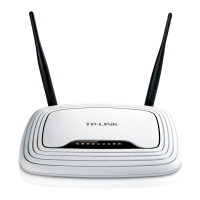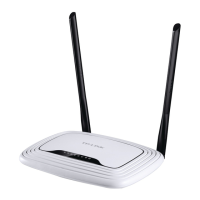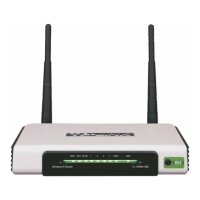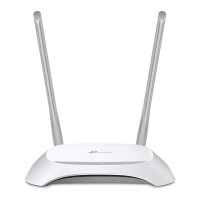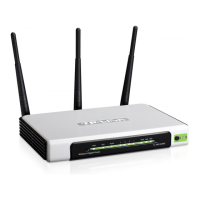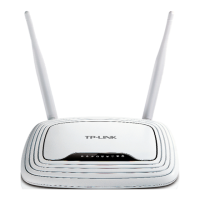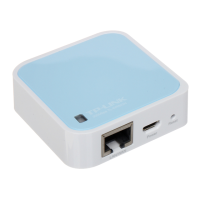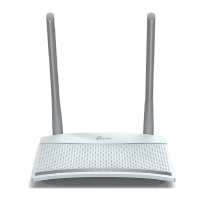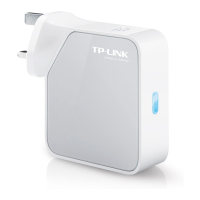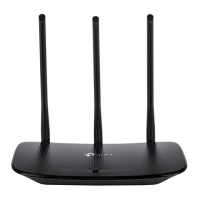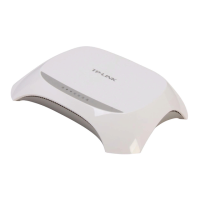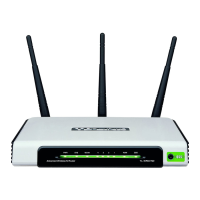Trigger Protocol - The protocol used for Trigger Ports, either TCP, UDP, or All (all
protocols supported by the router).
Incoming Ports - The port or port range used by the remote system when it responds to
the outgoing request. A response using one of these ports will be forwarded to the PC
which triggered this rule. You can input at most 5 groups of ports (or port sections). Every
group of ports must be separated with ",", for example, 2000-2038, 2046, 2050-2051,
2085, 3010-3030.
Incoming Protocol - The protocol used for Incoming Port, either TCP, UDP, or ALL (all
protocols supported by the router).
Status - The status of this entry, Enabled means the Port Triggering entry is enabled.
Modify - To modify or delete an existing entry.
Common Applications - Some popular applications already listed in the drop-down list of
Incoming Protocol.
To modify or delete an existing entry:
1. Find the desired entry in the table.
2. Click Modify or Delete as desired on the Modify column.
Click the Enable All button to make all entries enabled.
Click the Disable All button to make all entries disabled.
Click the Delete All button to delete all entries
Once the router is configured, the operation is as follows:
1. A local host makes an outgoing connection to an external host using a destination port
number defined in the Trigger Port field.
2. The router records this connection, opens the incoming port or ports associated with this
entry in the Port Triggering table, and associates them with the local host.
3. When necessary, the external host will be able to connect to the local host using one of
the ports defined in the Incoming Ports field.
Note:
1. When the trigger connection is released, the corresponding opened ports will be closed.
2. Each rule can only be used by one host on the LAN at a time. The trigger connection of
other hosts on the LAN will be refused.
3. Incoming Ports ranges cannot overlap each other.
3.4.7.3. DMZ
Go to “Advanced→Forwarding→DMZ”, and then you can view and configure DMZ host in this
page. The DMZ host feature allows one local host to be exposed to the Internet for a
special-purpose service such as Internet gaming or videoconferencing. The router forwards
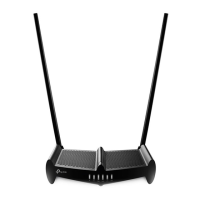
